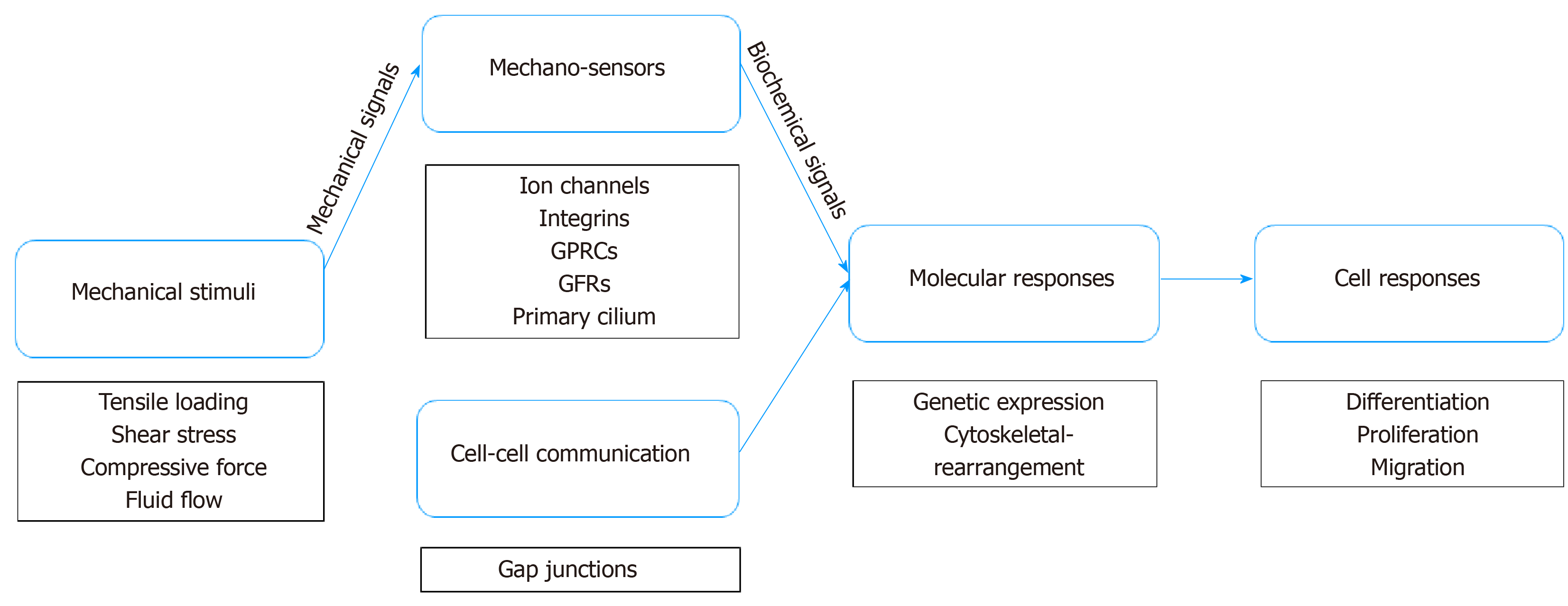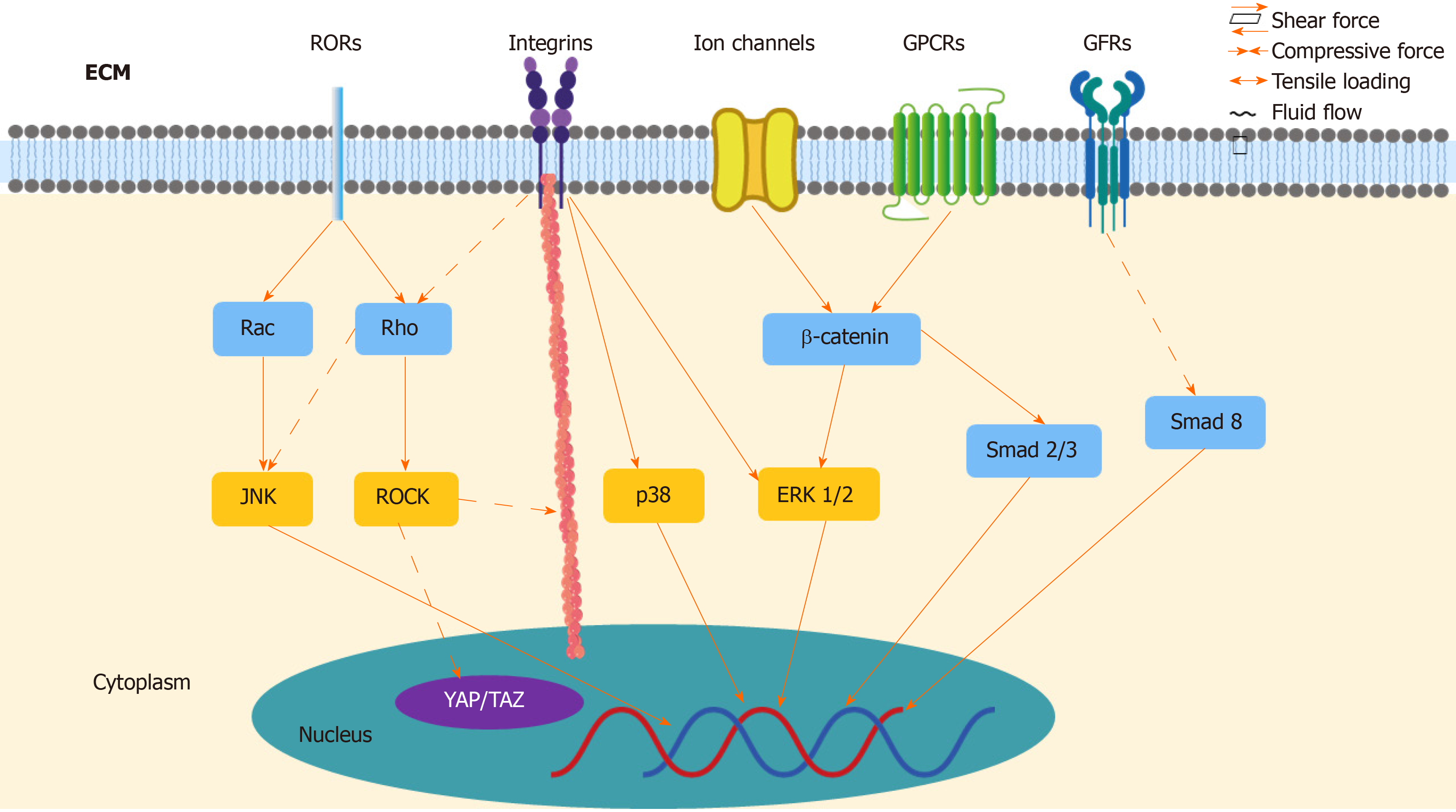Copyright
©The Author(s) 2020.
World J Stem Cells. Sep 26, 2020; 12(9): 952-965
Published online Sep 26, 2020. doi: 10.4252/wjsc.v12.i9.952
Published online Sep 26, 2020. doi: 10.4252/wjsc.v12.i9.952
Figure 1 Process of mechanotransduction in stem cells for tendon repair.
This figure describes various ways by which mechanical loading stimulates mechanosensors to emit mechanical signals that convert into biochemical signals, which, in turn, activate the rearrangement of cytoskeleton and activate genetic expression via various signaling pathways. Cell-cell communication transduces signals from one cell to another cell via gap junctions. GPRC: G protein-coupled receptor; GFR: Growth factor receptor.
Figure 2 Signaling pathways responding to mechanical stimuli applied to a cell.
This figure describes how mechanosensors, such as G-protein coupled receptors, integrins, ion channels, and growth factor receptor, sense mechanical loading and activate a series of signaling pathways downstream, in turn promoting gene expression and/or cytoskeleton rearrangement in tendon repair. ECM: Extracellular matrix; ROR: Receptor tyrosine kinase-like orphan receptor; GPCRs: G-protein coupled receptors; GFRs: Growth factor receptor; JNK: c-Jun N-terminal kinase; ROCK: Rho-associated protein kinase; ERK: Extracellular signal-regulated kinase; YAP: Yes-associated protein; TAZ: PDZ-binding motif.
- Citation: Wang HN, Huang YC, Ni GX. Mechanotransduction of stem cells for tendon repair. World J Stem Cells 2020; 12(9): 952-965
- URL: https://www.wjgnet.com/1948-0210/full/v12/i9/952.htm
- DOI: https://dx.doi.org/10.4252/wjsc.v12.i9.952










